Call Of Cthulhu Review — Squid Logic
A descent into madness.
By
David Wildgoose
on
Where to buy
NS
XONE
PS4
Call of Cthulhu: The Official Video Game
$27.69 at Walmart
There are no available deals for this platform
$23. 99 at Best Buy
GameSpot may get a commission from retail offers.
Even if you haven’t read any of H.P. Lovecraft’s literary works, you likely possess a passing understanding of why he is broadly recognized as one of the most significant horror writers of the 20th century. His ideas of unspeakable, unknowable terrors driving men (and it is almost always men) to madness, and his creation of the Cthulhu mythos with its pantheon of ancient gods utterly indifferent to the lives of men, have influenced countless novels, films, pen-and-paper and video games in the years since. This latest effort, from French studio Cyanide, spins a familiar tale of artistic obsession, unnatural experimentation and the frailties of the human mind into a mostly successful—if not exactly revelatory—exploration of Lovecraft’s core thematic concerns. But its achievements in narrative and mood-setting are regularly undermined by some lackluster sleuthing, run-of-the-mill adventure game puzzles and a handful of truly terrible pseudo-action sequences.
Edward Pierce is a private investigator in Boston who seems to specialize in underwhelming his employer, the Wentworth Detective Agency, and self-medicating the trauma he suffered during World War I with alcohol and sleeping pills. Still shaken after waking from yet another nightmare, he agrees to look into the death of Sarah Hawkins, her husband, and their son three months prior in a house fire on the tiny island and former whaling port of Darkwater. Sarah’s father seeks out Pierce after taking posthumous receipt of one of his daughter’s paintings, a rather heavy-handed depiction of a woman cowering before some kind of demon. Pierce, summoning all his investigative acumen, suggests Sarah was trying to send a message via her art.
The rhythm of Pierce’s detective work, and thus the bulk of the game, is established as soon as he disembarks at the fog-drenched and permanently midnight Darkwater docks. You can explore, in first-person, a small location, talk to the various locals and examine certain items of interest. Conversations are presented with a dialogue wheel offering multiple topics, some of which are only unlocked if Pierce has learned relevant information while occasionally others are delivered as binary choices—pick one and you can’t go back to pursue other spokes on the wheel. The voice performances here is entirely serviceable, and not nearly as hammy as one might fear given the setting, though the writing itself suffers from some jarring tonal shifts as you navigate the branches of dialogue and countless unfortunate typos in the subtitles.
Conversations are presented with a dialogue wheel offering multiple topics, some of which are only unlocked if Pierce has learned relevant information while occasionally others are delivered as binary choices—pick one and you can’t go back to pursue other spokes on the wheel. The voice performances here is entirely serviceable, and not nearly as hammy as one might fear given the setting, though the writing itself suffers from some jarring tonal shifts as you navigate the branches of dialogue and countless unfortunate typos in the subtitles.
Taking cues from the Cthulhu pen-and-paper RPG, you can earn and assign points to a collection of stats that, in theory, let you tailor Pierce’s detective expertise towards Investigation, Psychology, Eloquence and so on. These stats affect both the dialogue options—a high level in Eloquence might enable Pierce to choose a more persuasive line of questioning—and the ways you can interact with the environment, i.e. Pierce can draw upon his knowledge of Medicine to reveal something about a corpse. Yet these moments rarely, if at all, feel significant; they mostly seem like minor excursions en route to the same outcome.
Yet these moments rarely, if at all, feel significant; they mostly seem like minor excursions en route to the same outcome.
Gallery
In general, the RPG nature of the game feels undernourished. The idea of these stats is, I assume, to let you know you’re applying specific techniques of investigation; in some instances, it succeeds, most notably in the few occasions when Pierce is able to solve puzzles in multiple ways. But much of the time the differences between having leveled up your Strength stat instead of your Investigation stat feel ambiguous at best and trivial at worst.
It’s ambiguous at best because you get the feeling that’s what the game is aiming for in order to drive central narrative themes. When you make certain choices or perform certain actions the message, «This will affect your destiny,» pops up in the top left corner in a manner similar to a Telltale adventure game. What’s never clear, however, is how your destiny has been affected. There’s no end of chapter screen that recaps the crucial choices you made and little sense, by the game’s conclusion, of how those decisions lead to the choice Pierce has to confront in the very final scene. On my first playthrough I was faced with two possible endings, while on my second, after making a bunch of different choices throughout, I had unlocked a further two without any real understanding of how I’d been given the chance to alter Pierce’s destiny.
There’s no end of chapter screen that recaps the crucial choices you made and little sense, by the game’s conclusion, of how those decisions lead to the choice Pierce has to confront in the very final scene. On my first playthrough I was faced with two possible endings, while on my second, after making a bunch of different choices throughout, I had unlocked a further two without any real understanding of how I’d been given the chance to alter Pierce’s destiny.
Call of Cthulhu, and Lovecraft himself, revels in the inexplicable, the ineffable, the fallibility of human perception and its limited capacity to understand the world. Over the course of the game, Pierce finds himself grappling to make sense of what he’s seen—or what he thinks he’s seen. As his grip on reality, already tenuous to begin with, further loosens, it becomes difficult, if not impossible, to reason out cause and effect. On a narrative level, this serves the story well, maintaining suspense and hitting you with well-timed twists. But on a more mechanical level, as you select each choice with a shrug of ignorance, it feels weirdly distancing and ultimately unsatisfying.
But on a more mechanical level, as you select each choice with a shrug of ignorance, it feels weirdly distancing and ultimately unsatisfying.
Much of Pierce’s detective work is routine. You scour each location for hotspots with which to interact, pocketing clues and the odd useful object. Progress is typically a case of diligence—find enough hotspots and Pierce will work out what to do next. Sometimes, however, he’s able to «reconstruct» past events that occurred at the present location, but while these tend to be interesting in terms of plot revelations they, again, only require you to find the relevant hotspots and click on them. There’s a kind of grim pleasure to be had here, I suppose, a measure of compulsive enjoyment gleaned from tracking down every last hotspot that some players will find gratifying. It’s rote work, though.
When Call of Cthulhu breaks out of its procedural setup, it reveals itself at its best and at its very worst. The high point sees Pierce trapped in a hospital you’ve previously visited—and thus, crucially, should be familiar with. He has to traverse a shadow version of the hospital, navigating its pitch black corridors using only the fading light of a lantern to unlock a route through the normal version. By drawing upon the knowledge you’ve accumulated previously, it works fantastically as a tense and unsettling puzzle.
He has to traverse a shadow version of the hospital, navigating its pitch black corridors using only the fading light of a lantern to unlock a route through the normal version. By drawing upon the knowledge you’ve accumulated previously, it works fantastically as a tense and unsettling puzzle.
In contrast, the low points arrive when you’re forced into the game’s handful of action sequences. In one, you’re hiding from a monster that will kill you instantly if it gets too close. You eventually realize you have to find a particular item—one, it should be said, out of a dozen near-identical items scattered throughout the adjacent rooms—and use it in a particular spot. The only clue you’re given is a comment Pierce makes when he picks up the correct item, noting that this one «seems different somehow.» I’m not ashamed to admit that, in the heat of the moment, I failed to pick up on this dialogue change as I was a little bit distracted by the howling monster pursuing me across the room.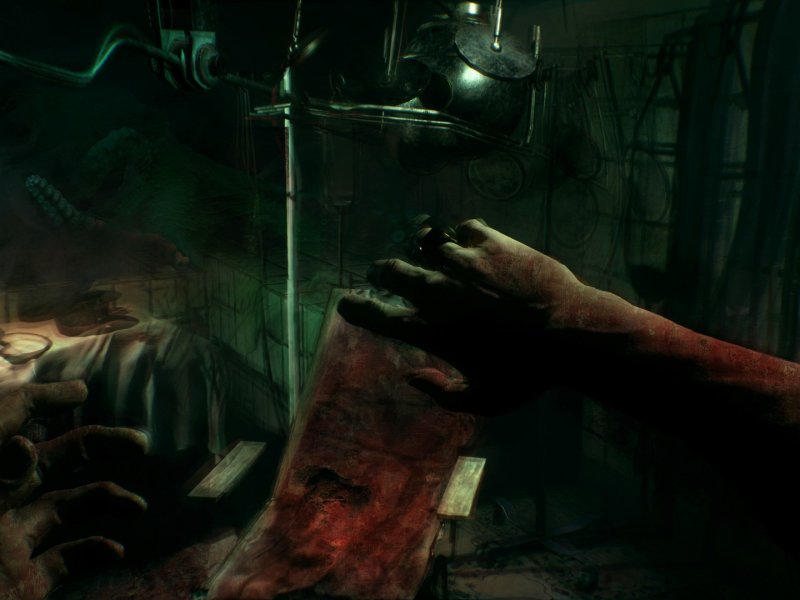 During this trial-and-error cycle of death and reload I must have attempted this sequence 30-odd times before I eventually worked out what to do and was able to systematically try each item until I found the correct one.
During this trial-and-error cycle of death and reload I must have attempted this sequence 30-odd times before I eventually worked out what to do and was able to systematically try each item until I found the correct one.
In another, Pierce is equipped with a handgun for the only time in the game and has to make his way across an area populated with slow, shuffling enemies. On my first playthrough, I died while experimenting with what happens when you get caught and, when the game reloaded, found myself without a gun. The only way I could proceed was by running around the area, luring enemies into chasing me around until eventually, a gap opened between them that was wide enough for me to dart through. It turned what was probably meant to be a dramatic, seat-of-the-pants dash for safety into a comical farce. (On my second playthrough I simply shot everyone, thanks to my gun not disappearing, and it proved rather more mundane than dramatic, but at least it wasn’t frustrating.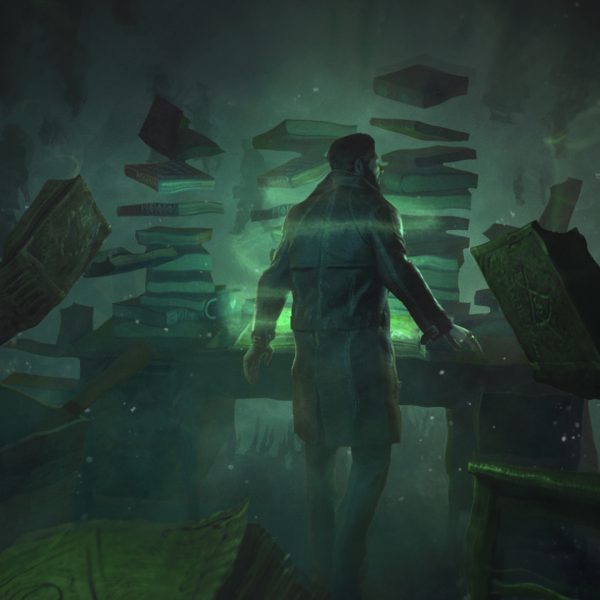 )
)
Dwelling on these few low points may seem overly harsh—they account for no more than a small portion of the whole game, after all. But they are not merely poor moments in an otherwise solid game; they’re awful pieces of game design utterly inconsistent with the rest of the game. Much of Call of Cthulhu is a perfectly competent adventure game built on firm, if uninspired, point-and-click traditions. And while it won’t dazzle you with ambitious, creative puzzle-solving, its central story is as haunting and consuming as you want a good Lovecraft tale to be. But then, like some nightmare creature, an action sequence comes out of nowhere and ruins the experience.
View Comments (41)
Back To Top
Call of Cthulhu review | PC Gamer
Our Verdict
A mediocre detective game with predictable stealth and a surreal story that runs out of steam near the end.
Why you can trust PC Gamer
Our expert reviewers spend hours testing and comparing products and services so you can choose the best for you. Find out more about how we test.
Need to know
What is it? A Lovecraftian adventure game with a surreal story
Expect to pay: $45/£40
Developer: Cyanide Studio
Publisher: Focus Home Interactive
Reviewed on: Windows 10, i7-8750H, GTX 1070, 16GB RAM
Multiplayer: None
Link: Official site
£21.11
View at Amazon
View at Amazon
View at Amazon
As I walk down a seemingly endless corridor, spotlights popping into life as I approach them, I spy a shadow through the window of a white padded cell. I press my face to the glass and see myself staring back, and then, suddenly—and I’m still not sure what camera trick developer Cyanide used to pull this off—I’m the one inside the white room. As I turn to look around, the window and door vanish, and I writhe in panic, a green gas clawing at my vision as I scream. When a door finally appears, it leads not onto a long corridor but into a doctor’s room, where a man in a white coat leans over a mangled patient.
As I turn to look around, the window and door vanish, and I writhe in panic, a green gas clawing at my vision as I scream. When a door finally appears, it leads not onto a long corridor but into a doctor’s room, where a man in a white coat leans over a mangled patient.
When Call of Cthulhu embraces just how bizarre its tale of cults, awakened old gods, and mental fragility is, it feels like a surreal horror triumph. But, sadly, that only happens for about five minutes at a time, and between those moments it’s an astoundingly average adventure game full of generic puzzles and predictable stealth segments.
Island shudders
- We’re curating all the best Black Friday PC gaming deals right here
It begins when famous painter Sarah Hawkins and her family die in a house fire on a remote island called Darkwater, near Boston. The police blame Sarah, claiming she was mentally unstable, but her father thinks otherwise. He can’t get anyone to listen to him, and as a last resort visits failing, alcoholic private detective Edward Pierce—that’s you. You’re asked to jump on a boat, dig around the Hawkins’ burned-out mansion, and find out what really happened.
You’re asked to jump on a boat, dig around the Hawkins’ burned-out mansion, and find out what really happened.
Darkwater is an unsettling place, and I feel its oppressive atmosphere as soon as I step ashore. Fishermen glance at me over glasses of moonshine, while down at the docks a crowd gathers around a marooned whale, its skin slashed as if by giant claws. And if the fact this is a Lovecraft-inspired game isn’t a big enough hint that this rundown town hides a dark secret, the early dialogue with the owner of a bar, a ship captain, and the leader of a bootlegger gang leaves me in no doubt.
To find clues, I just walk around searching for glowing dots, pressing E on them to examine whatever book, photograph or blood stain I’ve come across.
But as I soon find when I head to the crime scene, the detective work involved in uncovering that dark secret is puddle shallow. To find clues, I just walk around searching for glowing dots, pressing E on them to examine whatever book, photograph or blood stain I’ve come across. Sometimes, the game will tell me there’s a hidden object nearby—but all that means is the glowing dot is tucked beneath a desk, and it’s green instead of white.
Sometimes, the game will tell me there’s a hidden object nearby—but all that means is the glowing dot is tucked beneath a desk, and it’s green instead of white.
You can also reconstruct the past in certain situations, activating clues one by one to build up a silhouetted version of events. These made me feel more like a detective, and the scenes are detailed enough that I could sometimes guess what happened before Pierce worked it out, which is satisfying. In one, I was shown a young woman eavesdropping on a conversation between three seated men. It looked, to me, like whoever had been sitting in the farthest away chair would’ve seen her. Sure enough, when I walked to that chair, it triggered an image of a man rising to confront the woman, and I felt very clever indeed.
Those moments of deduction were rare, however, and most of the clues feel like window dressing for whatever room you’re in, rather than part of the story. A lot of the time I just felt like I was clicking on dots until I could trigger the next cutscene.
No brains, no brawn
The puzzles are generally boring too, and some repeat: on three separate occasions, you have to follow the trail of a pipe or cable between rooms to find the source of electricity, water, or gas. In another puzzle, in an old bookshop, you’re asked to work out the combination of a safe from a series of audio logs. You’re told it’ll take a «genius» to solve it, but you’re spoon-fed the answers, and I cracked the safe in less than a minute.
Stealth sections are sandwiched awkwardly between these puzzles. As you sneak about an asylum, guards walk the same paths on loop and if you create a distraction—by convincing a patient to scream, for example—they’ll come to inspect and never return to their post, staring at the same spot endlessly.
You’ll also face one Lovecraftian beast multiple times, and each encounter is frustrating. You can never fight back, which means you’re always running away and hiding (there’s only one combat sequence in the entire game and it’s a pointless shooting gallery against zombie-style enemies late on).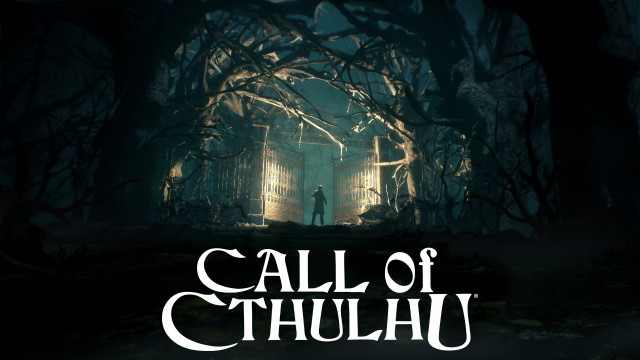 The first time you meet the monster, you have to avoid it so you can destroy a painting. Destroying it requires an unspecified item in a room full of objects that look the same, so it’s basically trial and error. If you pick the wrong one, you might have time to pick up another before the monster catches you, but most of the time it’ll find and insta-kill you, restarting the whole sequence.
The first time you meet the monster, you have to avoid it so you can destroy a painting. Destroying it requires an unspecified item in a room full of objects that look the same, so it’s basically trial and error. If you pick the wrong one, you might have time to pick up another before the monster catches you, but most of the time it’ll find and insta-kill you, restarting the whole sequence.
The mountains of madness
The story is really the only thing that provided any fun—for the first two-thirds, it had its tentacles around me. The narrative unfolds slowly at first, as Pierce realises just how deep the mystery goes and then, gradually, it begins pulling him into different dimensions. You’ll delve into a nightmare dungeon beneath the Hawkins manor full of torture and violence, and then you’ll wake up on a sofa in the drawing room, unsure whether it was real or not. Pierce is a dull protagonist, but he’s just as bewildered as you are, which made me feel some connection to him, and help understand his descent into madness.
When the action matches how ambiguous the story is, it’s hard to put down. In its best puzzle, you switch between two lamps to travel between different versions of a hospital, opening up doors and revealing runes as you go. It’s dark and confusing and you’ll go through doors that warp you back to the start. Surreal sections like this stand out, and it’s a shame there aren’t more of them.
In the final third, the ambiguity gets overwhelming, and the murder mystery is tossed aside hurriedly, leaving plot threads dangling.
You can steer the story by making occasional decisions that are in part governed by an RPG-like stat system. Call of Cthulhu is based on the tabletop RPG of the same name, which means you get character points to spend on different attributes as you progress. In dialogue, you’ll get access to different responses based on your stats. You might be able to threaten somebody if your strength is high, or blag your way out of a tight spot if you’ve invested in eloquence. Some doors will be locked behind a certain investigation skill, while a high psychology stat will give you insight into the behaviour of others.
Some doors will be locked behind a certain investigation skill, while a high psychology stat will give you insight into the behaviour of others.
Having lots of points in a certain skill doesn’t guarantee success, however, and Call of Cthulhu never explains how your stats translate into actions. You know there are dice rolls going on behind the scenes when you try to pick a lock, and sometimes you’ll be able to guess how decisions you make affect the story, but in general it’s hard to figure out, and that fits the eerie, unknowable setting. When you make certain choices, the game will tell you they «affect your destiny», but never explains how—again, I’m a fan, as it keeps you guessing.
But in the final third, the ambiguity becomes overwhelming, and the murder mystery is tossed aside hurriedly, leaving plot threads dangling. The idea is that you’ll instead focus on the Lovecraftian cosmic horror, but it throws far too much at you at once. Late in the game, it introduces new concepts at the same time as the motivations of existing characters change, and I felt lost—like I no longer had a stake in the story, and like the questions I had about my journey so far would never be answered.
Throughout Call of Cthulhu’s eight hours it threw up enough mysteries that I still wanted to see what happened at the end—I just no longer cared when I was presented with the game’s final big decision. I enjoyed its surreal moments, and one of the four possible endings is a real spectacle, but even it isn’t worth slogging through the detective busywork.
Call of Cthulhu: Price Comparison
£21.11
View
£29.99
View
£80.29
View
powered by
Read our review policy
Call of Cthulhu
A mediocre detective game with predictable stealth and a surreal story that runs out of steam near the end.
Samuel Horti is a long-time freelance writer for PC Gamer based in the UK, who loves RPGs and making long lists of games he’ll never have time to play. He’s now a full-time reporter covering health at the Bureau of Investigative Journalism. When he does have time for games you may find him on the floor, struggling under the weight of his Steam backlog.
Call of Cthulhu. Look into the Eyes of the Monsters — Gambling
Congenial
Howard Lovecraft, The Call of Cthulhu
Roger Zelazny, A Night in the Dread October
Layers of Fear
Outlast
clarify something. Call of Cthulhu by Cyanide Studio is not a remake of the game Call of Cthulhu: Dark Corners of the Earth , which was released in 2006, but rather a digital incarnation of the role-playing board game of the same name. The plot is not based on any particular work by Howard F. Lovecraft. The action takes place in a place that you will not find in any of the writer’s stories. Moreover, creatures will appear in the game, which were not written about by the “father of Cthulhu myths”, but by his followers.
Moreover, creatures will appear in the game, which were not written about by the “father of Cthulhu myths”, but by his followers.
But despite all this, the French developers have managed the most important and most difficult thing: to capture the Lovecraftian spirit and convey it as closely as possible.
Waves of Madness
The town of Darkwater, perched on an island off the coast of Boston, is shrouded in eternal fog. Fishermen and whalers have long lived here, but the best days of the city are over. Fish became extinct in coastal waters in the 19th century, and the last whale caught at the same time entered into local legends as the “Wonderful Catch”. True, there are rumors that it was not a whale at all, but an unknown creature similar to the Kraken, but is it worth believing the tales of superstitious hillbillies?
It’s the Roaring Twenties now, and Darkwater is slowly dying. Its prototype from Lovecraft’s stories, the town of Innsmouth, managed to stay afloat thanks to a deal with the Deep Ones: in exchange for sacrifices, the sea people gave the inhabitants of Innsmouth fish and gold. However, the inhabitants of Darkwater made a slightly different deal. So only bootleggers who calmly turn their deeds away from the mainland police feel free on the island … and cultists who dream of awakening the Lord of the Worlds.
However, the inhabitants of Darkwater made a slightly different deal. So only bootleggers who calmly turn their deeds away from the mainland police feel free on the island … and cultists who dream of awakening the Lord of the Worlds.
This is where the story of our hero, Detective Edward Pierce, begins. He arrives on the island to investigate the death of Sarah Hawkins, a talented artist and the wife of a local aristocrat. But the narrow streets of Darkwater, along which the tentacles of fetid fog creep, and its dark waters (where the tentacles are no longer foggy at all) hide much more secrets than Pierce expected to reveal.
In the previous text, I hoped that the game would plunge you into an atmosphere of horror and madness, and my hopes were justified. But in some ways the demo version deceived me. For the first three hours, it seemed that Call of Cthulhu would be leisurely, measured and viscous, like Lovecraftian prose, and you would have to investigate more than run and hide. It turns out that the demo ended exactly at the moment after which the events are twisted so that there is no time to leave for tea.
It turns out that the demo ended exactly at the moment after which the events are twisted so that there is no time to leave for tea.
And that’s not bad, not at all. Even vice versa. After all, Lovecraft himself did not shy away from chases or hide and seek in his stories.
In the first four chapters, Pierce explores Darkwater in depth, trying to find out if the unfortunate Sarah really tried to kill her family. The fifth starts with a sudden plot twist, after which you, along with the hero, wonder what is happening here and what is true about what is happening. The more I played, the further the action went from the predictable channel, in order to rush beyond the reasonable in the final act.
In a literal and extremely positive way.
In the Labyrinth of Fear
The game takes eight to ten hours, even if you carefully study each location. Pierce’s path is not surrounded by barricades of artificially created obstacles and endless tasks, for the solution of which you need to deal with other tasks. But even if Call of Cthulhu were longer, it would hardly be boring for one simple reason — the game does not like to repeat itself.
But even if Call of Cthulhu were longer, it would hardly be boring for one simple reason — the game does not like to repeat itself.
At some point, you even begin to yearn for the calm first chapters with their investigation mode. Toward the end, the hero will not be at all up to it
Each chapter has something special to offer. In the Hawkins mansion, you need to study the crime scene and look for evidence. In the catacombs under the mansion — run as fast as you can so that you are not buried under the rubble. Pure stealth awaits in an art gallery, and a curious mystery awaits in a bookstore. Toward the end, you can even shoot a little… and look into someone else’s head. Lovecraft loved the mind-swapping theme, so that Pierce would be able to temporarily transfer into the bodies of other characters.
This is not exactly the same as the original. Pierce only observes the actions of others, and does not fully manage the new physical shell — as did, for example, Ephraim Waite in the novel «Thing on the doorstep» .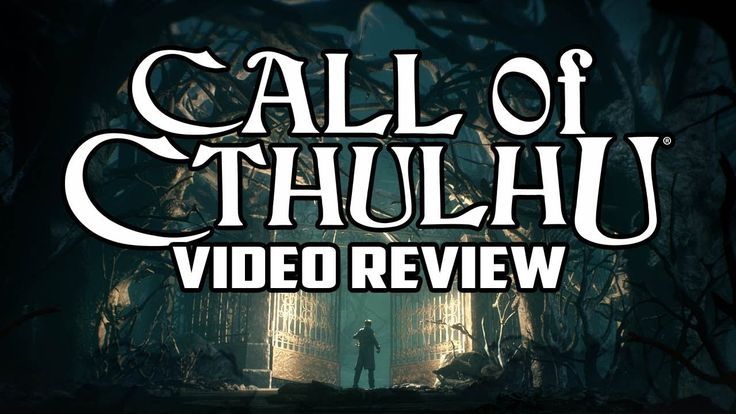 But this is a great find in terms of storytelling: this way we see important things that would otherwise be left behind the scenes.
But this is a great find in terms of storytelling: this way we see important things that would otherwise be left behind the scenes.
Character change does not affect gameplay. The same checks, the same mode of investigation
Even when we are returned to a familiar place, we won’t be bored. Not only because of the beautiful picture, the excellent atmosphere and the element of randomness borrowed from the tabletop. Familiar locations will definitely offer a new activity, almost always non-trivial.
We have to visit the cellars of the Riverside Institute several times, and for different characters. And every time this wonderful place will find something to surprise us with
I will give just one example. In one of the chapters, Pierce will have to wander through the dark hospital wing on the wrong side of reality. He has two lanterns at his disposal: the green one shows the way and opens passages sealed with magical signs, the red one allows you to go through doors that are simply not visible in the rays of another lamp. If you go the wrong way, the space will twist, and you will be returned to the start.
If you go the wrong way, the space will twist, and you will be returned to the start.
The catch is that the lamps can be changed in a strictly defined place… and that by the light of a green lantern you see some toothy person living in the darkness — and he, accordingly, sees you. If you please, not only competently combine lamps, but also quickly run to the desired point for the exchange. And keep yourself in control, hearing someone’s hoarse breathing in the impenetrable darkness ahead.
The same corridor in the light of different lamps. Feel the difference, as they say
In addition to the tasks in each location, the game intelligently alternates the locations themselves. The eerie catacombs are replaced by a mental hospital — and for the next half hour you hide from the kind doctors, feeling as if you briefly looked into the Outlast . The shabby walls of the hospital are replaced by a cozy mansion — and right there, from a warm living room with a crackling fireplace, you are thrown into a nightmare, where you, in the best traditions of Alien: Isolation , are shaking in the closet while a fanged monster roams outside.
But the main thing is that Call of Cthulhu alternates between different types of fear. The fear of the unknown is what Lovecraft called «the most ancient and most powerful.» Fear of being seen and caught. Fear of what lurks in the darkness. Fear of approaching madness: in other episodes, Call of Cthulhu becomes no less surreal than Layers of Fear , and plays with you in the same way — things change around you, as soon as you turn your back. And after another nightmare, a new chapter meets the hero with a short respite and a bright sun… just so that you don’t get tired of being afraid. After all, fear, as you know, has its own degree of freshness.
In contrast to a peaceful mansion flooded with daylight, you feel even more acutely the horror that you just had to endure in the casemates of a psychiatric hospital
A choice that does not exist
In some ways, the demo promised less than what I ended up getting, but it wasn’t without disappointment either.
I went through the game twice, trying very hard to follow different paths. The problem is that your choice has little effect, except for the ending. Yes, when Pierce says other dialogue lines, you get bits of new information. Yes, with a different path of pumping, the detective makes slightly different conclusions at the crime scene and sees things that he had not noticed before. But, in general, the plot rolls along the beaten track, to the same cutscenes with scanty differences.
In conversations with the characters, the game hints many times that this or that answer will change your fate — and in the end the changes turn out to be much less significant than you might expect. The storylines of many minor characters in any case will end crumpled, or even completely cut off in mid-sentence. You can make friends with someone, you can insult him — it will not affect anything, except for a couple of phrases in the next conversation. At some point, Pierce is given the choice of which of the two acquaintances to save and which to condemn to death, and even here there will be no significant consequences.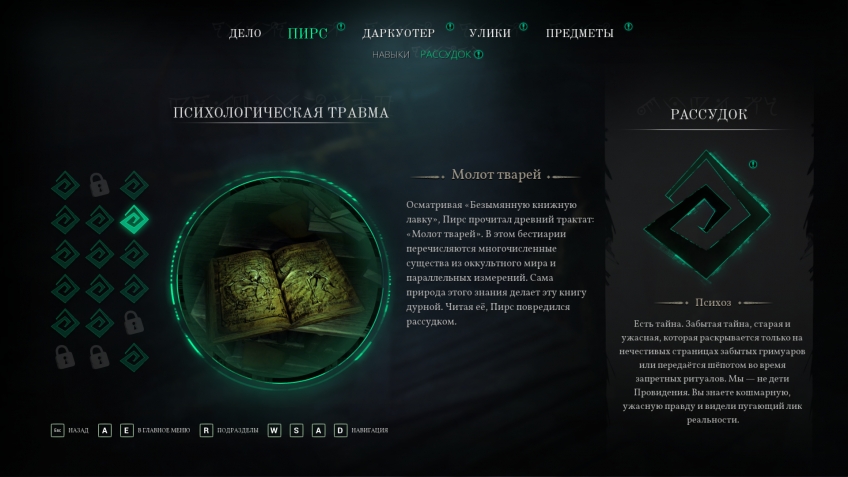
Pay attention to the icon in the upper left corner of the screen. And a little about what is on the screen: Leviathan was included in the Lovecraft pantheon not by the writer himself, but by his follower Ross Bagby in the story «Artifacts from Quivira» , but he fit into the story surprisingly well
The pumping system also promises more than it gives . Some skills are more useful than others, and by the end of the second playthrough, I was wondering why the ability tree was made the way it was. Search skills in any case have to be used much more often than eloquence or force. By the end of the game, the last two skills seem completely unnecessary: in order to defeat the final opponent, Pierce will need by no means mastery of words, but no matter how strong our detective is, he will be laid on both shoulder blades by one blow of a zombie fisherman.
Not all skills are equally useful, which is a pity. Especially considering that in one passage you will not swing each to 100%.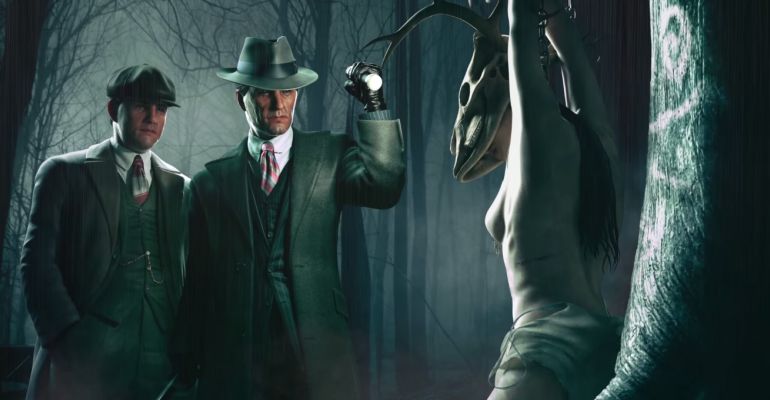 In such conditions, spending points on something stupid is all the more sad
In such conditions, spending points on something stupid is all the more sad
From here, problems with the phobia system, which the developers have been talking about so much, flow smoothly. Some of the fears you get in the story, whatever one may say. By the end of the game, you can stay in relatively sane, but not in completely sane (and this fits well with the rules of Lovecraftian myths). Getting others depends on the nuances of the passage. If you climb into the wrong room, you will see a mountain of dismembered corpses — hello, psychotrauma. Get too many injuries — hello, madness.
Sounds good, but again only affects the ending and answers in the dialogues. Do not expect any gameplay consequences. From the fifth chapter, the hero begins panic attacks in confined spaces — regardless of the number of injuries received. That’s all.
The funny thing is that panic doesn’t affect anything either. Pierce’s breath hitches, his heart starts pounding wildly, an ominous fog spreads around the edges of the screen . .. and nothing more. I honestly sat in a dark closet, waiting for death, a new phobia, or at least the fact that the hero would fall out without asking right under the nose of a bloodthirsty monster, — but the game is not punished me with nothing but funny visuals. Hide until you’re blue in the face. Why is it even needed in this case? To scare imaginary threat?
In general, in the absence of an open world, small locations and a short story that would fit into the format of one of Lovecraft’s stories, I expected more replayability.
Still, the advantages of Call of Cthulhu outweigh the disadvantages. I did not get bored during the second playthrough and I will definitely play more to collect all the endings (I remind you that there are four of them in total). For me, this story would ideally complement the collection of original Cthulhu myths, only here beautiful visualization is attached to the atmospheric content.
I respect the guys at Cyanide Studio for not going down the easy path.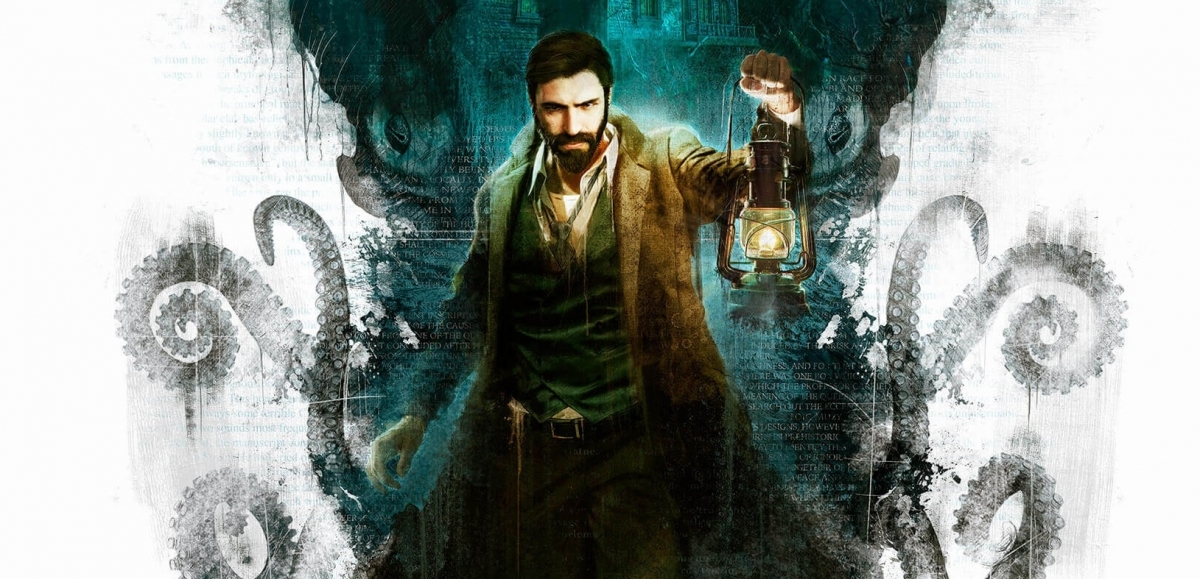 It would be easy to borrow external attributes, stuff familiar names and titles, draw fish frogs in golden tiaras singing «Cthulhu fhtagn», but forget about the main thing. In the new Call of Cthulhu, we will meet fishmen (albeit not quite canonical), and a lot of pleasant little things that refer to Lovecraft’s opuses, but, in general, this is a story not so much according to Lovecraft’s , but in the spirit of Lovecraft’s .
It would be easy to borrow external attributes, stuff familiar names and titles, draw fish frogs in golden tiaras singing «Cthulhu fhtagn», but forget about the main thing. In the new Call of Cthulhu, we will meet fishmen (albeit not quite canonical), and a lot of pleasant little things that refer to Lovecraft’s opuses, but, in general, this is a story not so much according to Lovecraft’s , but in the spirit of Lovecraft’s .
Of all the vast Lovecraftian «menagerie», whose representatives could hunt for Pierce on the way to the final, the developers chose not poppy shoggoths, Elders or Mi-Go, but Wandering between worlds. For the first time this cute creature appeared in the story «The Horror in the Museum» , and in the game we will see it in very similar scenery
Yes, I was somewhat disappointed by the lack of significant plot forks, but even in this I see an ideological message. People are not able to fight the Ancients on an equal footing. No matter how hard you try, they are still stronger. No matter how you flounder, you will not get off the fatal path.
No matter how you flounder, you will not get off the fatal path.
Pierce tries to hide from the truth behind materialism, rationality and familiar reality. But the more he learns about what lies beyond this reality, the faster he goes crazy — and this opens up new possibilities for him, because some answers cannot be reached by reason.
If you want to get a complete picture of what is happening, you will have to get into all sorts of suspicious places, read suspicious occult treatises and cripple your psyche. No other way. And, of course, in the finale, you will have to pay for this: so that you can fully feel helplessness in the face of the inescapable power of evil.
Call of Cthulhu is a clever mix of detective, adventure, horror, RPG and board game elements. Unrealized opportunities are compensated by interesting gameplay finds, and a stylish picture and a twisted plot immerse you in the very atmosphere for which we love Lovecraftian horrors.
Thanks to Cyanide Studio for giving us a story that is not only truly captivating, but also leaves room for reflection after the end credits. I really hoped they would succeed.
I really hoped they would succeed.
Now I can firmly say that it worked.
Pleased
- Lovecraftian spirit;
- plot and main character;
- non-trivial gameplay;
- chic atmosphere, picture and overall aesthetics;
- room for thought.
Disappointed
- not fully realized gameplay potential;
- storylines of secondary characters;
- in some places the animation of the characters in the dialogues is crooked.
How we played
in what: Game was provided by the publisher
on which: PC
How much: 20 hours
Achivka editorial office
“True fan (ik)”
Walk a game , surrounded by three volumes of Lovecraft and the Signs of the Ancients. For every fireman.
About localization
Russian subtitles. The translation is good, but the original voices of the actors in some places made me shout: “I don’t believe it!” But in general, the voice acting is very good.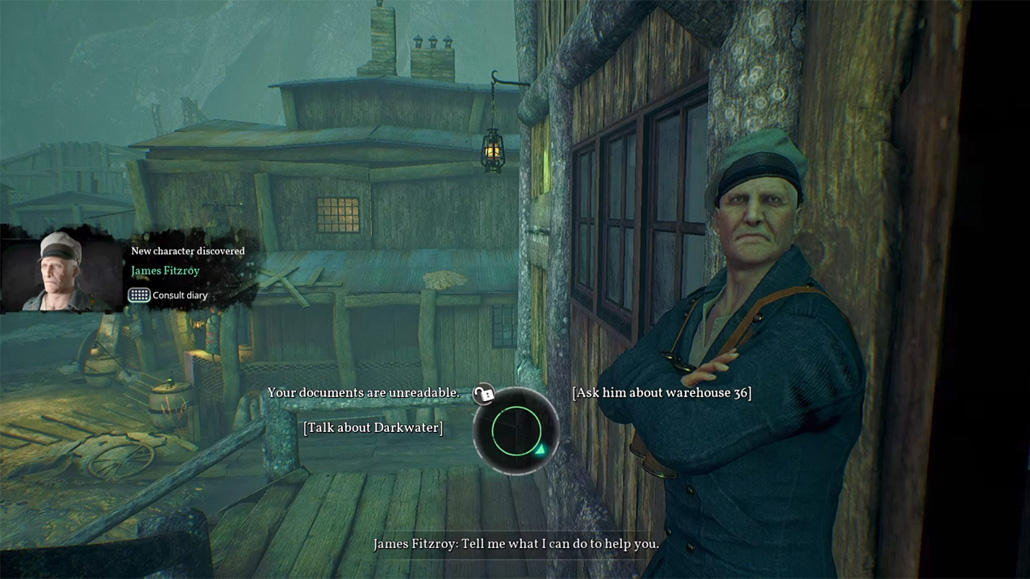
Verdict
An inventive, beautiful and frightening adventure in an atmospheric setting. Play for all lovers of good stories and those fans of Lovecraft who do not expect accurate illustrations to the original.
The best Cthulhu game? Call of Cthulhu 2018 review — DTF games
Article + video
8727
views
Howard Lovecraft’s short story «The Call of Cthulhu» was first published in 1926. And although the author himself spoke of him rather neutrally, his work was later highly appreciated by critics, he had his own fans and even developed a real near-religious cult. Of course, it was not without computer games based on motives. In 2005, Headfirst Productions revealed Call of Cthulhu: Dark Corners of the Earth to the world, then there was a lull, and only this year 2018, 13 years later, a new game is released dedicated to the Ancient sleeping in the depths of the Pacific Ocean…
The new Call of Cthulhu could not avoid being compared to Dark Corners of the Earth, because it is also the Call of Cthulhu, and many players were expecting something in the spirit of the same 2005 game. However, I hasten to assure you: these are two completely different products, although they have a number of similar features, but even those are more likely only external. Unlike the harsh and merciless survival-horror shooter that we saw 13 years ago, Call of Cthulhu 2018 is already a mixture of horror, role-playing game and quest, which is determined by the developers’ desire to partially or completely transfer the board game to the monitor screens.81 years old with the same name. But I won’t go into details.
However, I hasten to assure you: these are two completely different products, although they have a number of similar features, but even those are more likely only external. Unlike the harsh and merciless survival-horror shooter that we saw 13 years ago, Call of Cthulhu 2018 is already a mixture of horror, role-playing game and quest, which is determined by the developers’ desire to partially or completely transfer the board game to the monitor screens.81 years old with the same name. But I won’t go into details.
Strictly speaking, Dark Corners of the Earth had nothing to do with Cthulhu at all. The plot of the game was based on the stories «The Shadow over Innsmouth», «Out of Time», as well as other works of the writer to a greater or lesser extent, and, to be fair, the game strictly followed the original source, in places almost completely copying the events described in the stories. But still, how the name of the elder Ancient One got into the title of the game then is not clear.
While the new Call of Cthulhu fully justifies its name and corresponds to Lovecraft’s work both in spirit and, I’m not afraid to say, an almost perfectly recreated atmosphere, it also correlates with the original source with many plot parallels that I would like to tell, but… spoilers…
Call of Cthulhu is not a game interpretation of the “same” story (and certainly not a sequel, remake, reboot, etc. of the 2005 game, so it’s just silly to write “the original was better” !!!). However, there are many parallels between the game’s plot and Lovecraft’s The Call of Cthulhu.0003
It still remains a mystery to me why in almost every Lovecraft game we play as a detective? In no way am I going to scold the new Call of Cthulhu for this, but just remember: The Call of Cthulhu 2005 — Detective Jack Walters, Darkness Within — Investigator Howard Loreid. Similarly, in the new game, the main character is detective Edward Pierce.
After the end of the First World War, in which Pierce took a direct part, returning to civilian life, he becomes a private detective.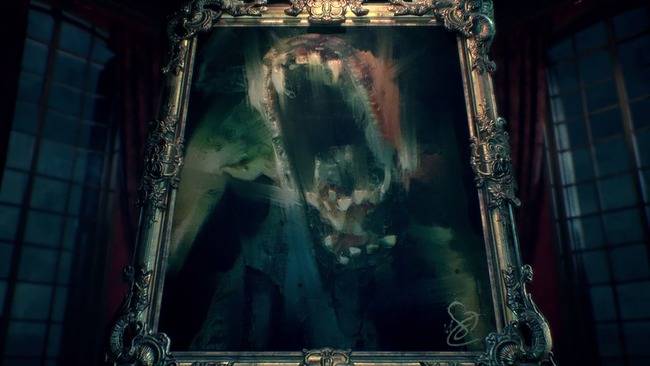 In the yard of the twenties. The psyche of the hero, shaken during the war, gave him depression, insomnia and terrible nightmares that torment Edward at night. All this helped him drown out only two things — sleeping pills and a glass of strong scotch tape.
In the yard of the twenties. The psyche of the hero, shaken during the war, gave him depression, insomnia and terrible nightmares that torment Edward at night. All this helped him drown out only two things — sleeping pills and a glass of strong scotch tape.
Another detective… another alcoholic…
Having woken up from another nightmare, in which something completely unimaginable happened, the hero lets the player into his «office». While we are studying the detective’s workplace, and then chatting on the phone with the secretary, a new client appears outside the office door. Pierce opens the door for him, but he is in no hurry to take on another banal and boring business. But, as it turned out, the case was unusual. The client was the father of a famous young artist named Sarah Hawkins, who died some time ago. Together with her husband and son, she died during a fire in their estate in the town of Darkwater, which is located on a secluded island off the coast of the United States. There were rumors that Sarah was possessed, and the creepy paintings that brought her such popularity were the fruits of her mental breakdown. The police closed the case, saying it was an accident. But Sarah’s father did not think so, just as he did not consider his daughter crazy, and the only one he could now count on, the only one who could find out the truth, was Detective Edward Pierce.
There were rumors that Sarah was possessed, and the creepy paintings that brought her such popularity were the fruits of her mental breakdown. The police closed the case, saying it was an accident. But Sarah’s father did not think so, just as he did not consider his daughter crazy, and the only one he could now count on, the only one who could find out the truth, was Detective Edward Pierce.
The plot of the game turned out to be so exciting that you get involved literally from the very beginning, as soon as you start interviewing witnesses, collecting evidence, in general, conducting a natural investigation. Call of Cthulhu wraps its sticky tentacles around you and holds you until the very end. The story is very twisted and full of unexpected twists and turns. Throughout the game, you try to collect seemingly incompatible pieces of the puzzle, and in the end, when everything falls into one straight line, you experience indescribable pleasure and delight and … you want more.
In places like this, a sign saying «Welcome» is always creepy. ..
..
The main setting of Call of Cthulhu is the same town of Darkwater, where our hero immediately goes to investigate a mysterious case. Once this city flourished thanks to fishing and whaling. But over time, there was no one to catch in the surrounding waters. All the whales died out, things were not so hot with the fish either. Darkwater fell into disrepair and gradually began to turn into a ghost town. Despite the fact that Prohibition is rampant in the United States at this time, the locals do nothing but thump, exposing empty bottles right under the proclamation banning alcohol … And besides, now a gang of bootleggers is in charge of everything in the city.
Studying the history of Darkwater is no less interesting than investigating the Hawkins case, and I advise you not to neglect this moment, because it makes a considerable contribution to the treasury of the atmosphere. In general, as soon as you find yourself on the island, it begins to gradually squeeze you from all sides. Everything around looks as if the apocalypse has recently happened, swept away human civilization from the face of the earth, and now we are among its ruins and the inhabitants of the island aimlessly trying to survive. The visual perfectly conveys the necessary mood to the player, so that you are imbued with melancholy, depression and hopelessness, and your hand involuntarily begins to reach for the bottle hidden for a rainy day. And getting out of this little world is another task.
Everything around looks as if the apocalypse has recently happened, swept away human civilization from the face of the earth, and now we are among its ruins and the inhabitants of the island aimlessly trying to survive. The visual perfectly conveys the necessary mood to the player, so that you are imbued with melancholy, depression and hopelessness, and your hand involuntarily begins to reach for the bottle hidden for a rainy day. And getting out of this little world is another task.
First of all, we, of course, go to the beer tavern
Our main business here is, as I said, finding clues and interviewing local residents. I would divide the entire gameplay into two modes. In the first, we, as usual, just wander around the locations, collect interesting items and notes, and communicate with NPCs. The second one is more interesting. Getting into special zones, usually this is some particular room or other room, the game requires the activation of the investigation mode.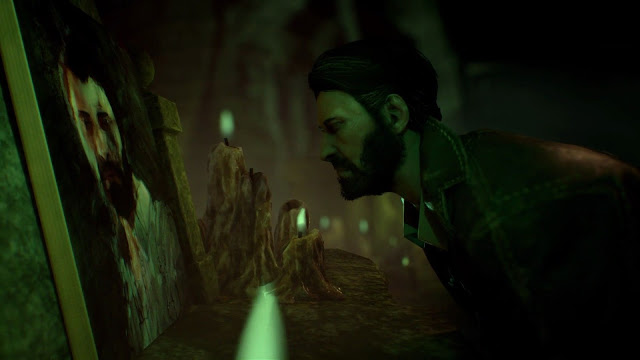 The hero breaks away from reality and begins to reconstruct the events of the past. What is interesting — no surplus. Having found one or two clues, Pierce is in no hurry to sort out the whole situation, as it was. He reports only what he sees and the logical conclusions that follow from it.
The hero breaks away from reality and begins to reconstruct the events of the past. What is interesting — no surplus. Having found one or two clues, Pierce is in no hurry to sort out the whole situation, as it was. He reports only what he sees and the logical conclusions that follow from it.
In dialogues with characters, we always have several answers. If you discovered some interesting fact or learned some secret, the dialogue ring will be replenished with new options. There are also special phrases that can be selected with sufficiently developed skills. There are 7 of them: Psychology, Search, Investigation, Eloquence, Strength, Medicine and Occultism. And all of them can be improved. Moreover, if the first 5 are improved for special points that Pierce receives during the course of the investigation, then Medicine and Occultism can only be improved by reading the corresponding books that we can find when exploring locations. Some skills are more useful than others, since the chains of dialogues and actions associated with them are more common than others, but those that are completely useless are not in the game. The choice of abilities to improve should be carefully considered, although there is no way to predict which ones will be more useful to you here. It will not work to swing all the skills to the maximum — the hero simply does not have time to score such a number of points for the entire game.
The choice of abilities to improve should be carefully considered, although there is no way to predict which ones will be more useful to you here. It will not work to swing all the skills to the maximum — the hero simply does not have time to score such a number of points for the entire game.
The skill system in Call of Cthulhu is quite interesting: some skills are upgraded with points received for investigation, others with the help of books, but, in addition, by improving the skill, you only increase your chance of success where the skill is needed, whether it is dialogue, locked to lock the door or the corpse of a whale washed ashore
No need to think that by bringing, for example, Eloquence to a new level, you will expect success every time the corresponding option appears in dialogs. The chance of success is given as a percentage, and no matter how high it may seem, there is always a chance of failure.
Edward Pierce — despite his initial confidence and stamina of a man who has seen the horrors of war, he is still subject to mental tests.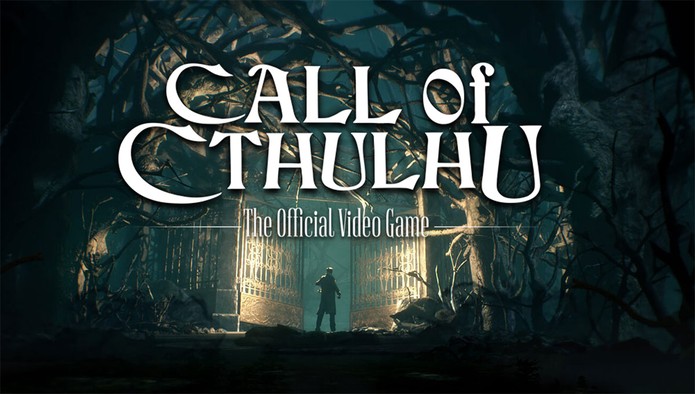 And surprises that can shake the hero’s mind can be hidden behind anything. Here you are digging in the shop of a local book antiquary and find such an inconspicuous old box in which there is a book, and you are invited to leave this book alone or still look. If you choose the latter, you risk causing psychological trauma to Edward, since this ancient tome may turn out to be the Necronomicon, written by the mad Arab Abdul Alhazred … I think you understand what this means … Also, observing something truly terrible, unreal and inexplicable, Pierce also receives negative effect point. There is a special scale in the menu that is responsible for the level of the character’s sanity, and it depends on you whether the hero will reach the end with a mind that is still able to think sensibly, or whether he will end up like Howard Loreid.
And surprises that can shake the hero’s mind can be hidden behind anything. Here you are digging in the shop of a local book antiquary and find such an inconspicuous old box in which there is a book, and you are invited to leave this book alone or still look. If you choose the latter, you risk causing psychological trauma to Edward, since this ancient tome may turn out to be the Necronomicon, written by the mad Arab Abdul Alhazred … I think you understand what this means … Also, observing something truly terrible, unreal and inexplicable, Pierce also receives negative effect point. There is a special scale in the menu that is responsible for the level of the character’s sanity, and it depends on you whether the hero will reach the end with a mind that is still able to think sensibly, or whether he will end up like Howard Loreid.
Hammer of creatures — a book that is terrible in its content, capable of damaging Edward’s mind
Not once, with one or another of your decisions, the inscription «this will affect your fate» will be displayed in the corner of the screen. Sometimes this or that choice will allow you to find out an extra grain of information, but all decisions will definitely affect the ending. There are 4 outcomes in total, and which ones will be available to you depends on the choice of the player in special situations.
Sometimes this or that choice will allow you to find out an extra grain of information, but all decisions will definitely affect the ending. There are 4 outcomes in total, and which ones will be available to you depends on the choice of the player in special situations.
The gameplay is not limited to the above elements. Sometimes it is diluted with stealth levels, when the hero is unable to resist the opponents, he is forced to hide from them and commit sabotage in order to divert their attention and run at this time into the desired corridor. «Stealth hide and seek» is a topic that is already overused, and for some players it can cause bouts of boredom or even annoyance. But as for me, everything is not so critical. These episodes are not as common and are themselves quite short. Besides, you can’t call them particularly complicated. Only the level with the demogorgon from Stranger Things, which suddenly crawls out of the picture and forces poor Pierce, and with him your obedient servant, to play solitaire bricks, only strained. But as it turns out later, even this bastard is pretty easy to handle.
But as it turns out later, even this bastard is pretty easy to handle.
That same sinister painting by Sarah Hawkins called «The Tramp». A local rich collector peered at this “masterpiece” for a long time and eventually gouged out his own eyes
In such episodes, according to the already established tradition, you can hide in closets or in ventilation shafts, but at the same time, again, the psychological characteristics of the hero will not let us sit quietly in them. From the rolling waves of fear, Edward starts to go crazy and hallucinations occur.
In Call of Cthulhu there will also be chases several times per game, which is exactly what we were shown in the trailer. In some situations, we pursue, in others, Edward himself runs away. These episodes, in my opinion, are performed quite dynamically and beautifully, but in places awkwardly, and therefore leave a double impression.
And all these game situations — research, investigation, stealth, chases, solving puzzles — are intelligently interspersed with each other and never for a second let you get bored or postpone the game for later. Each level, each location contains something unique, thanks to which you do not get the impression that you are repeating the same thing over and over again throughout the game.
Each level, each location contains something unique, thanks to which you do not get the impression that you are repeating the same thing over and over again throughout the game.
Lovecraft is felt in literally every corner — a viscous atmosphere permeated with mysticism, surreal parishes, crazy dreams and visions … I would like to separately praise the creators of the game for the fact that they perfectly showed the mixing of reality and delirium, so not only Pierce, but also me, sitting behind the monitor, he could not really understand what was real in the game and what was an illusion. But the main thing is that the Cyanids managed to transfer the same Lovecraftian suspense and fear of the unknown into the game.
All this is complemented by a perfectly matched stylization and soundtrack, from which I was also delighted. Of course, you have long understood that the graphics in the game are far from modern, but this never interferes with the game, just as it did not prevent me from getting real pleasure from Call of Cthulhu.
Yes, Call of Cthulhu did not demonstrate any new ideas, it can be criticized as much as you like for its graphics and all other minor flaws, but it coped with its main task: Call of Cthulhu gave us another incredibly exciting, atmospheric story that makes you almost instantly plunge into it and pass in one breath.
The game depicts Pierce’s gradual descent into madness in a very realistic way… just look into his eyes…
I’ve been waiting for the release of Call of Cthulhu for a very long time, but at the same time I had some fears, and yet the game did not disappoint me at all. I confess that I didn’t have the money to buy it, so I turned to torrents and … I’m insanely ashamed, because the game is truly worthwhile and I will definitely, most certainly buy it, which I advise you to do in order to go through the game again in order to open the last fourth ending, which was not opened to me from the first playthrough, at least just so that it was in my collection on Steam.
